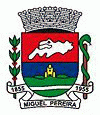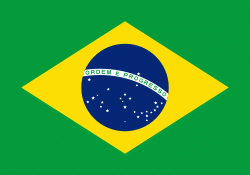Miguel Pereira (Miguel Pereira)
 |
 |
The city contains part of the Central Rio de Janeiro Atlantic Forest Mosaic of conservation units, created in 2006.
Until the 1700s, the region was inhabited by crowned Indians (puris). In that century, the missionary agents to be villaged in religious[8]
The historical evolution of Miguel Pereira is linked to that of Vassouras and Paty do Alferes, and to the expansion of coffee culture in the Rio Paraíba do Sul valley.
Miguel Pereira's occupation of European origin originated in the first explorations of European descendants who aimed to transport the Serra do Mar. and like Minas Gerais.
The drovers who went up the Rio das Mortes towards Sacra Família do Tinguá (currently a district of the municipality of Engenheiro Paulo de Frontin), fixed a crossing point in a small floodplain. Initially, the place was known as Barreiros or Tejuco, because, there, they got bogged down like troops of donkeys that traveled the New Way. Later, it started to be called Estiva, the name of a bamboo weave that the drovers used to place in the donkeys' paths, thus, conquering the mud on their journey.
Some small delights located in the region during the 18th century. These produce sugar or, more often, foodstuffs for consumption in Rio de Janeiro. In 1770, the Fazenda da Piedade dea Cruz was founded, which would become important as a coffee producer in the region. As lands of the current municipality of Miguel Pereira, they were, then, administratively and religiously subordinated to the Parish of Nossa Senhora da Conceição do Alferes, current Paty do Alferes.
Coffee plantations expanded at the beginning of the 19th century, powered by slave labor, constituting a factor of progress and sharp dynamism of the local economy. This development spurt motivated the parish to be elevated to the position of village of Nossa Senhora da Conceição do Alferes, in 1820. However, soon after, in 1837, the village headquarters was transferred to the village of Vassouras, returning Paty do Ensign to the condition of parish. In 1857, the village of Vassouras was transformed into a city and seat of the municipality that administered the current lands of Miguel Pereira.
The development of the region was only in the coffee farms, with practically no urban development. It was only after the construction of the Capela do Santo Antônio in 1898 that the settlers of Estiva began to build their humble houses and form an incipient commerce in an urban nucleus, thus encouraging the arrival of new residents to the place.
Despite suffering economic decline due to the abolition of slavery in 1888 and the depletion of land due to inadequate exploitation of coffee plantations, urban development was boosted at the beginning of the 20th century, when the line of Estrada de Ferro Melhoramentos (incorporated to the Central do Brasil Railroad in 1903), which, starting from Japeri, in the Baixada Fluminense, reached the Paraíba do Sul River in the city of Paraíba do Sul. The railway axis stimulated the birth of settlements that, for the most part, housed the railroad workers themselves. This is the case of Governador Portela, where part of the urban areas was owned by the Federal Railroad Network (RFFSA), which built an entire residential village for railway workers. This feature is responsible for the development of the district headquarters that would take place before Estiva, currently Miguel Pereira.
Map - Miguel Pereira (Miguel Pereira)
Map
Country - Brazil
Currency / Language
| ISO | Currency | Symbol | Significant figures |
|---|---|---|---|
| BRL | Brazilian real | R$ | 2 |
| ISO | Language |
|---|---|
| EN | English language |
| FR | French language |
| PT | Portuguese language |
| ES | Spanish language |

















